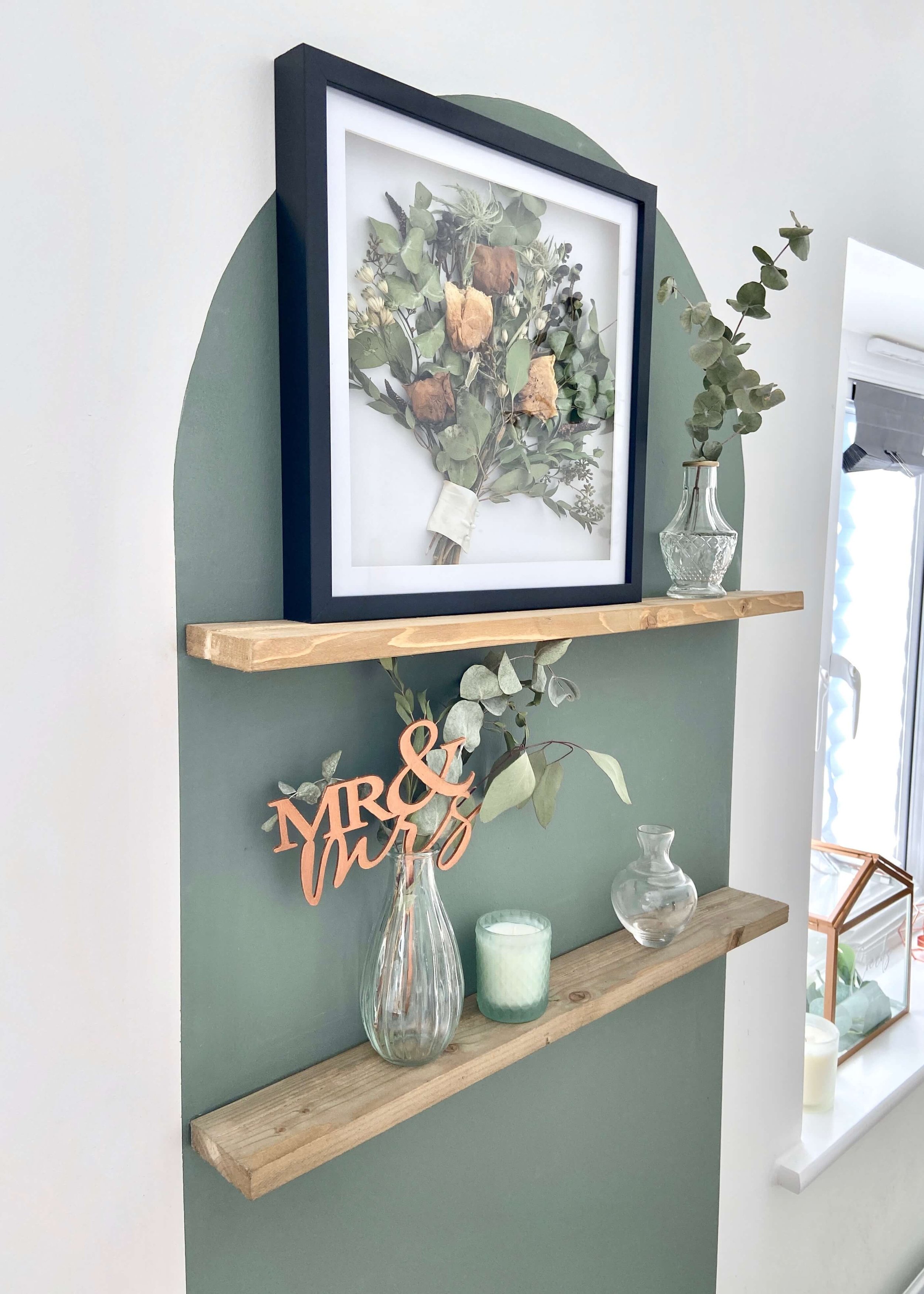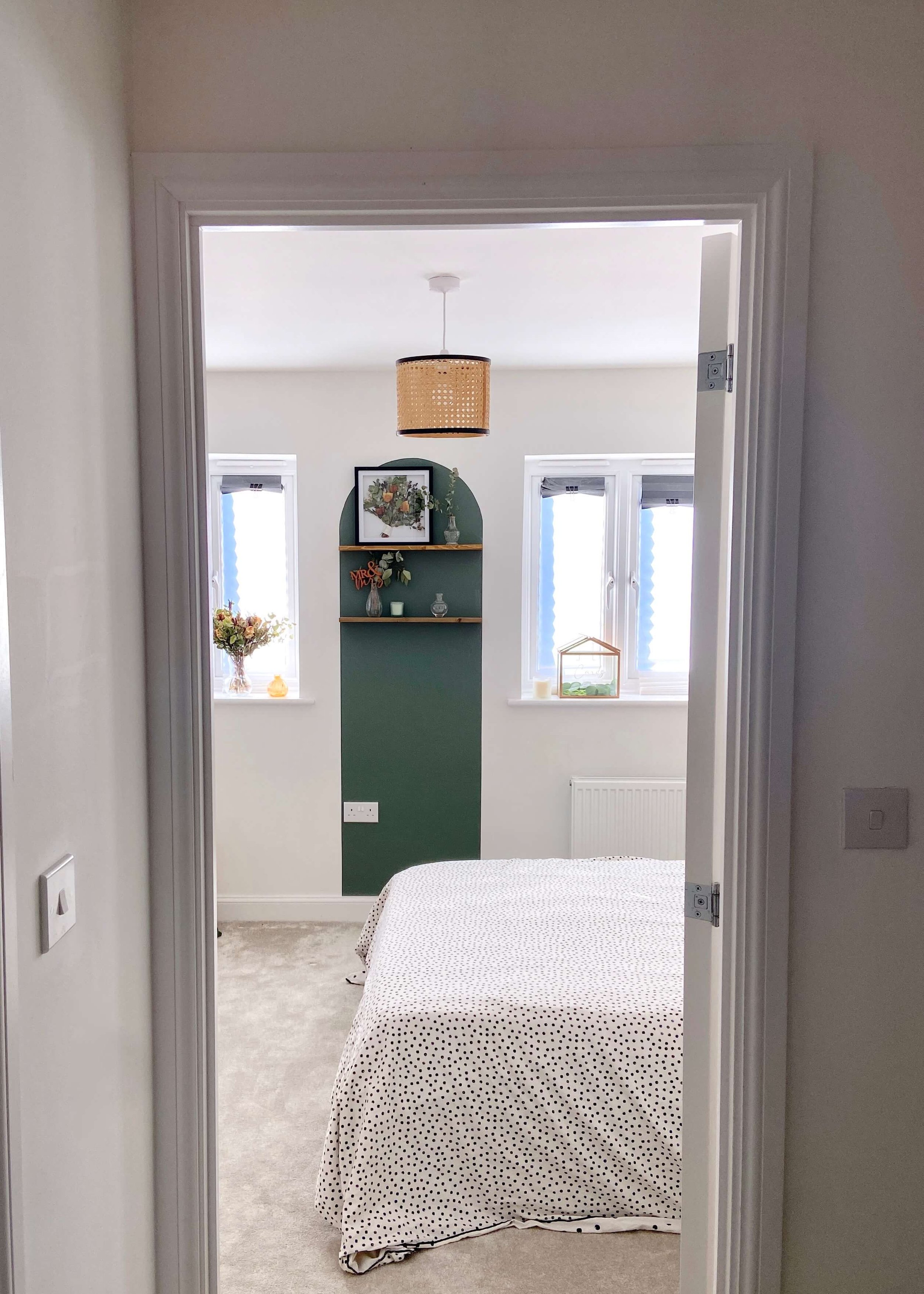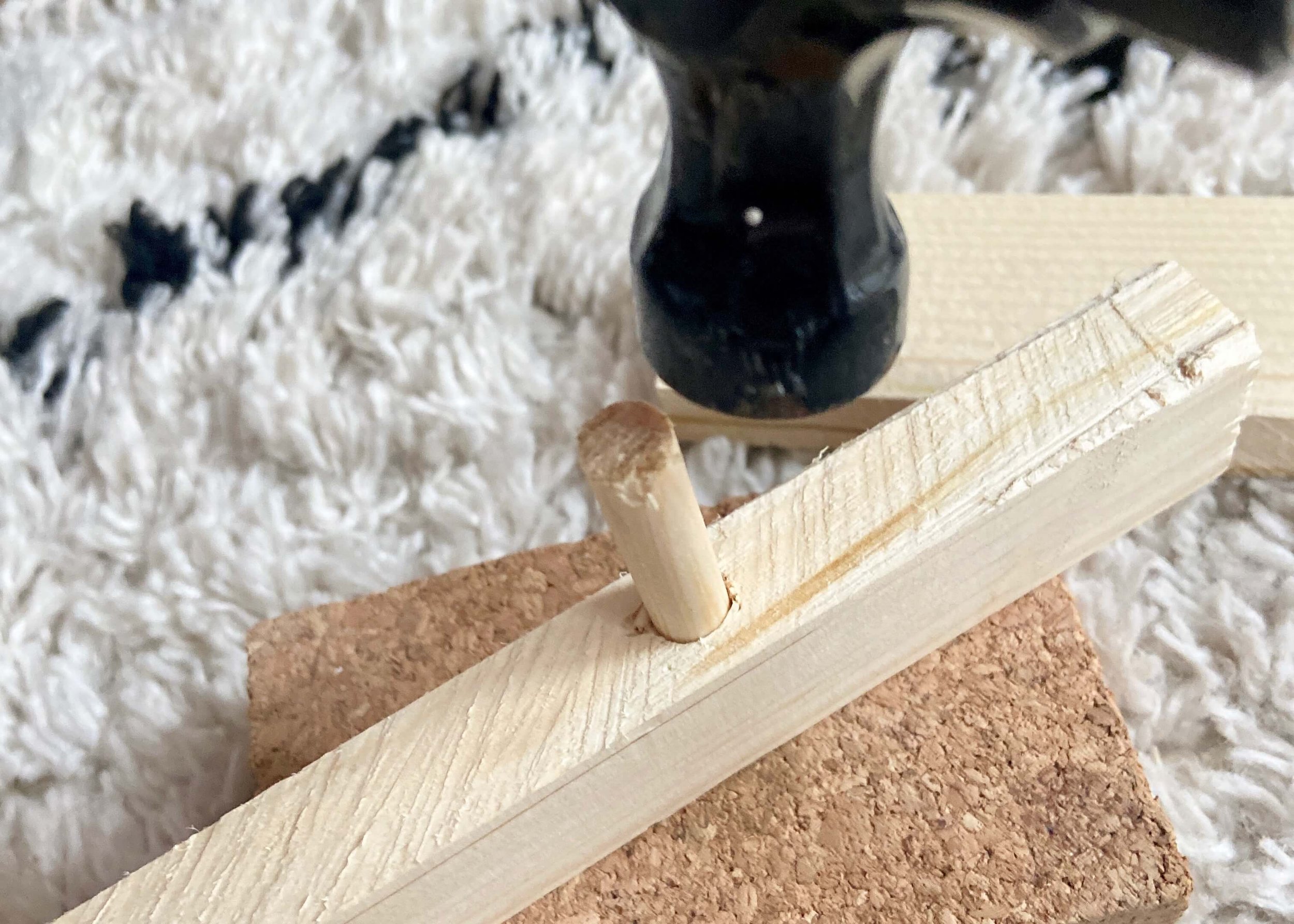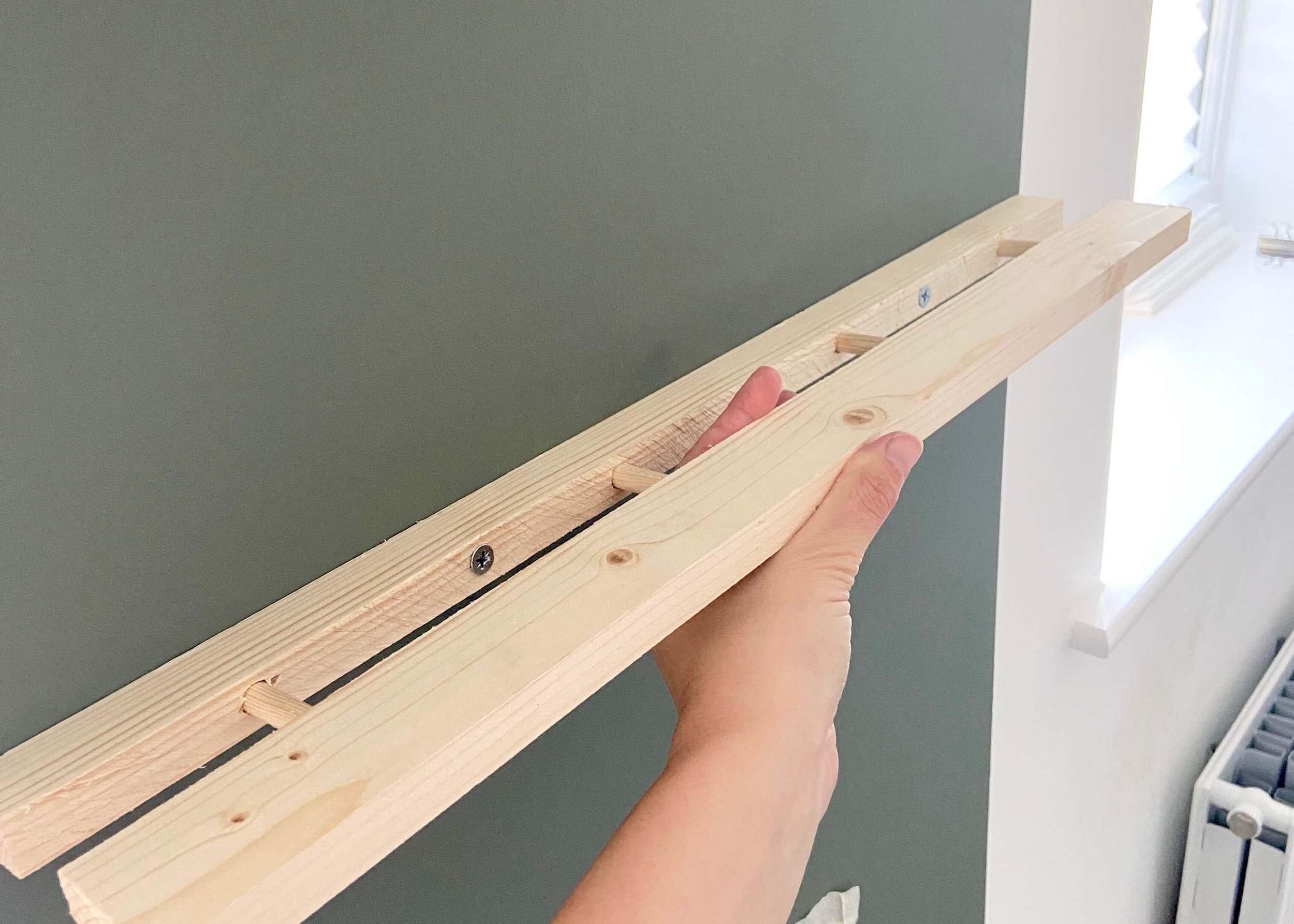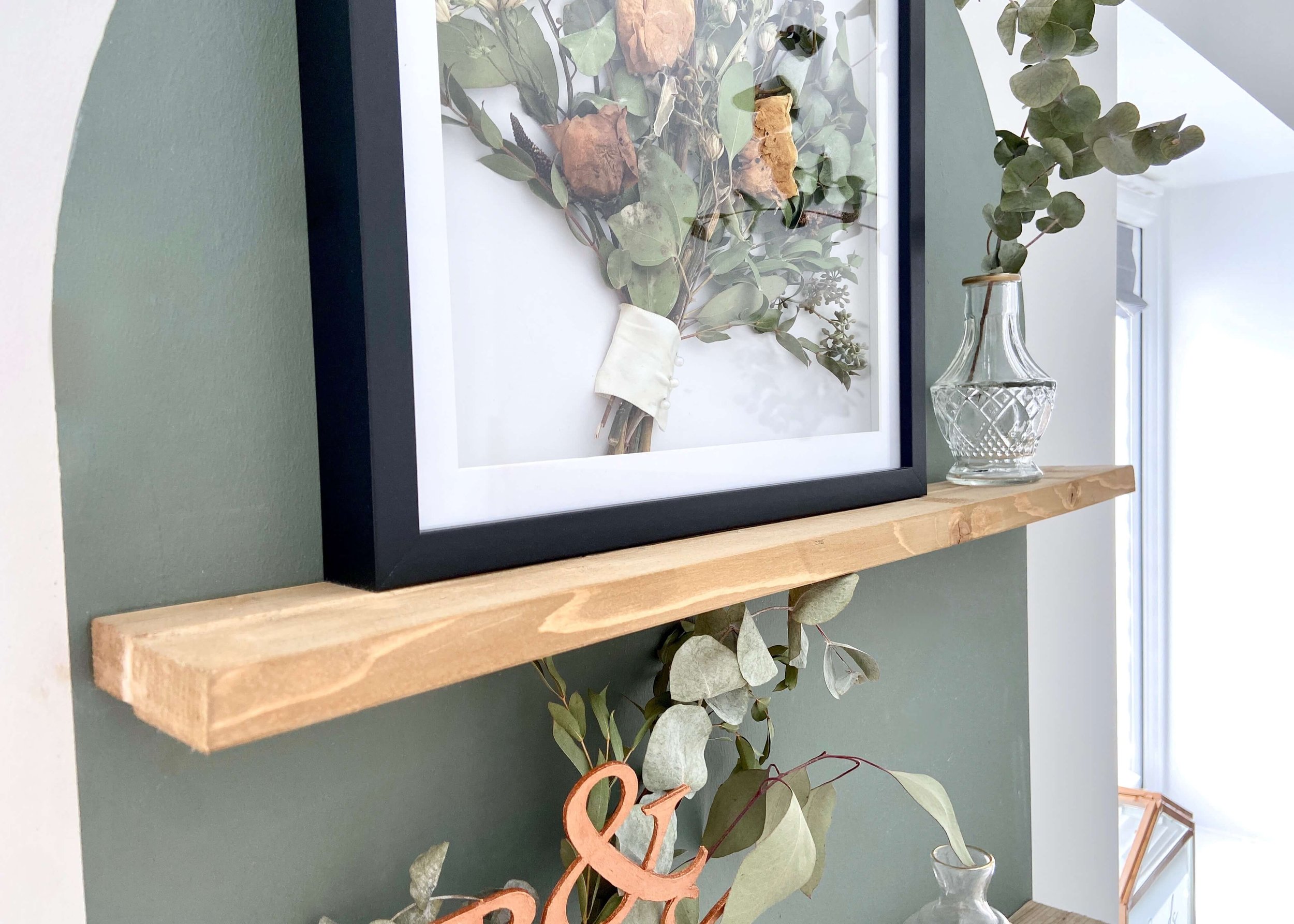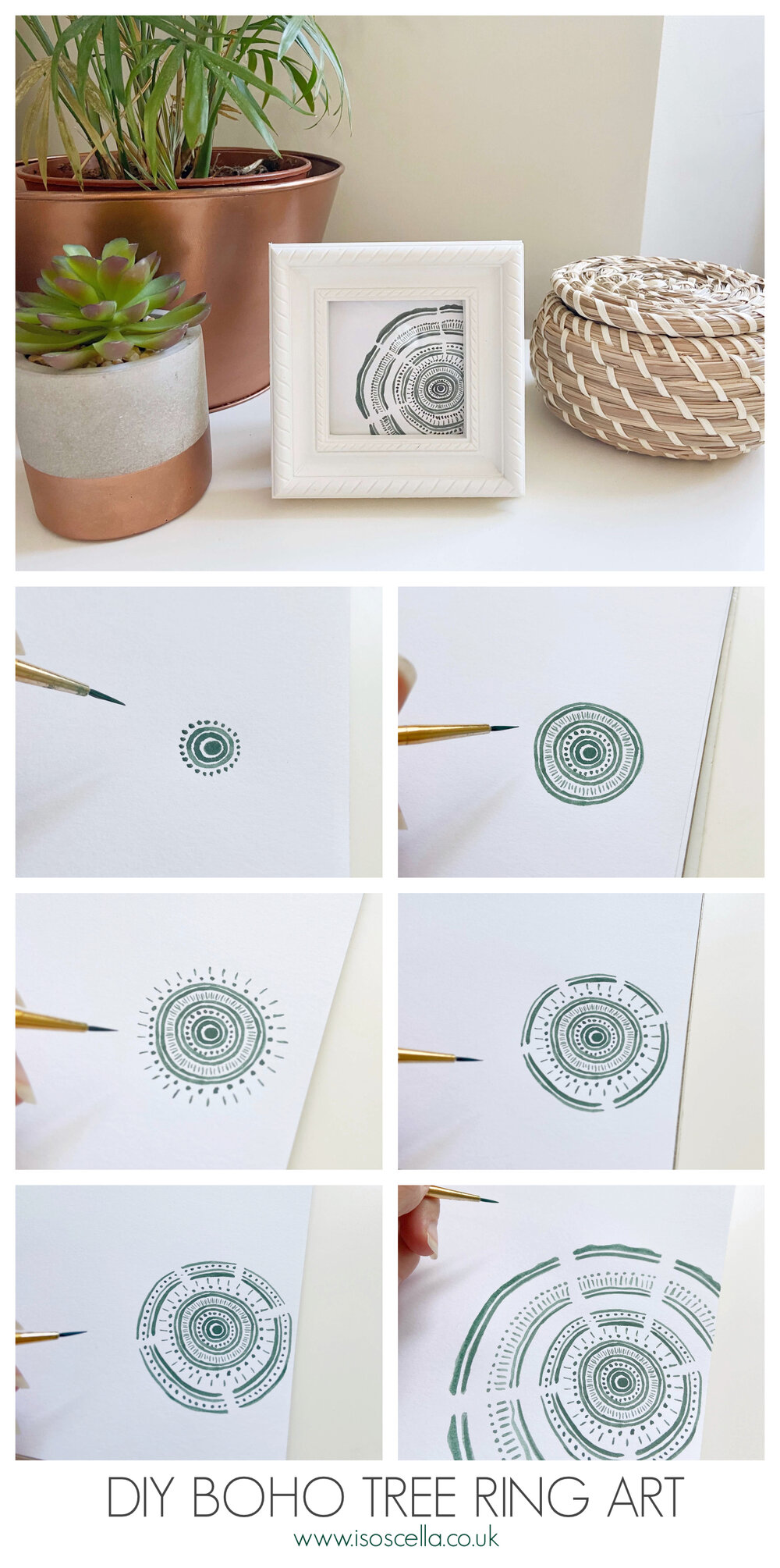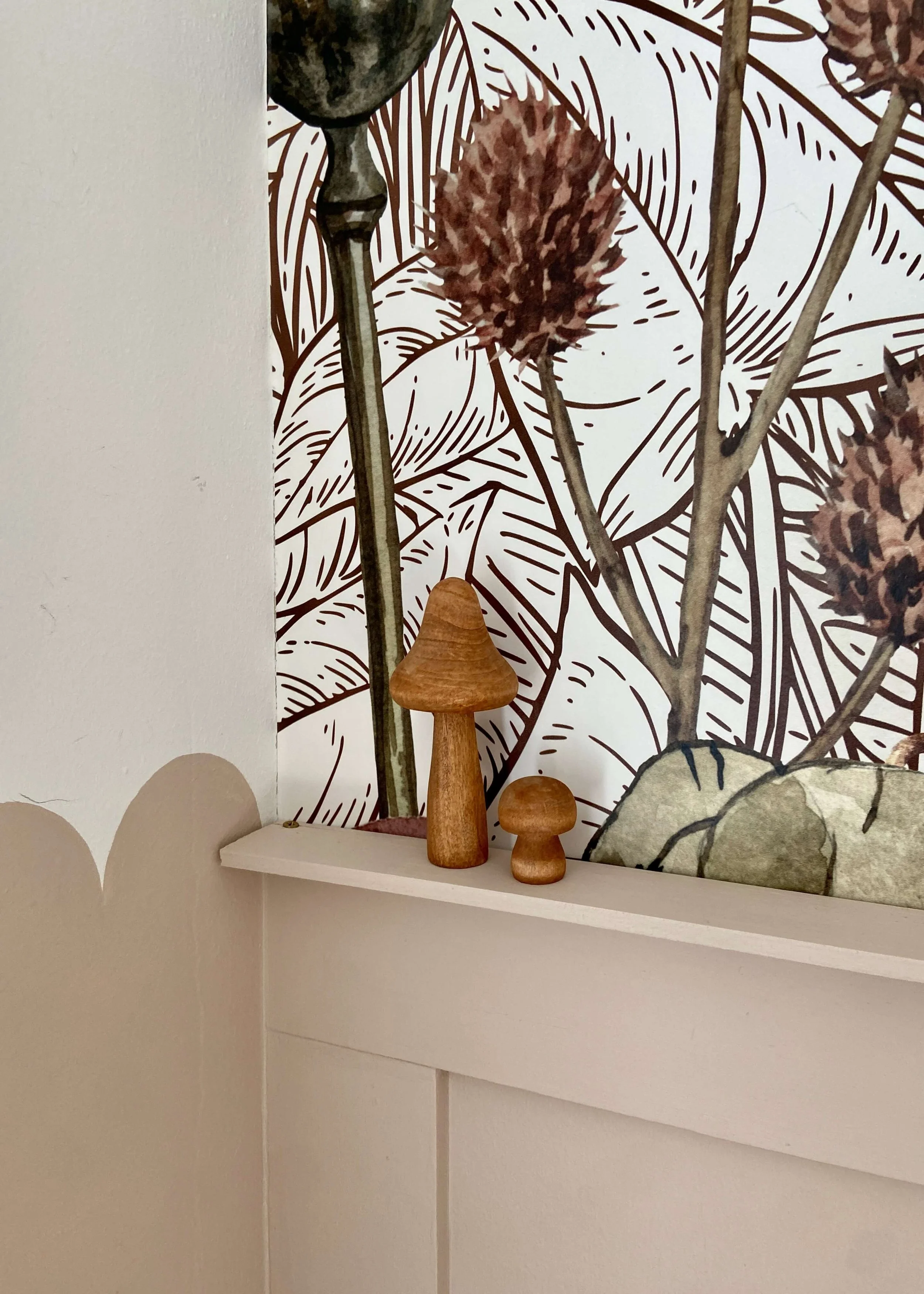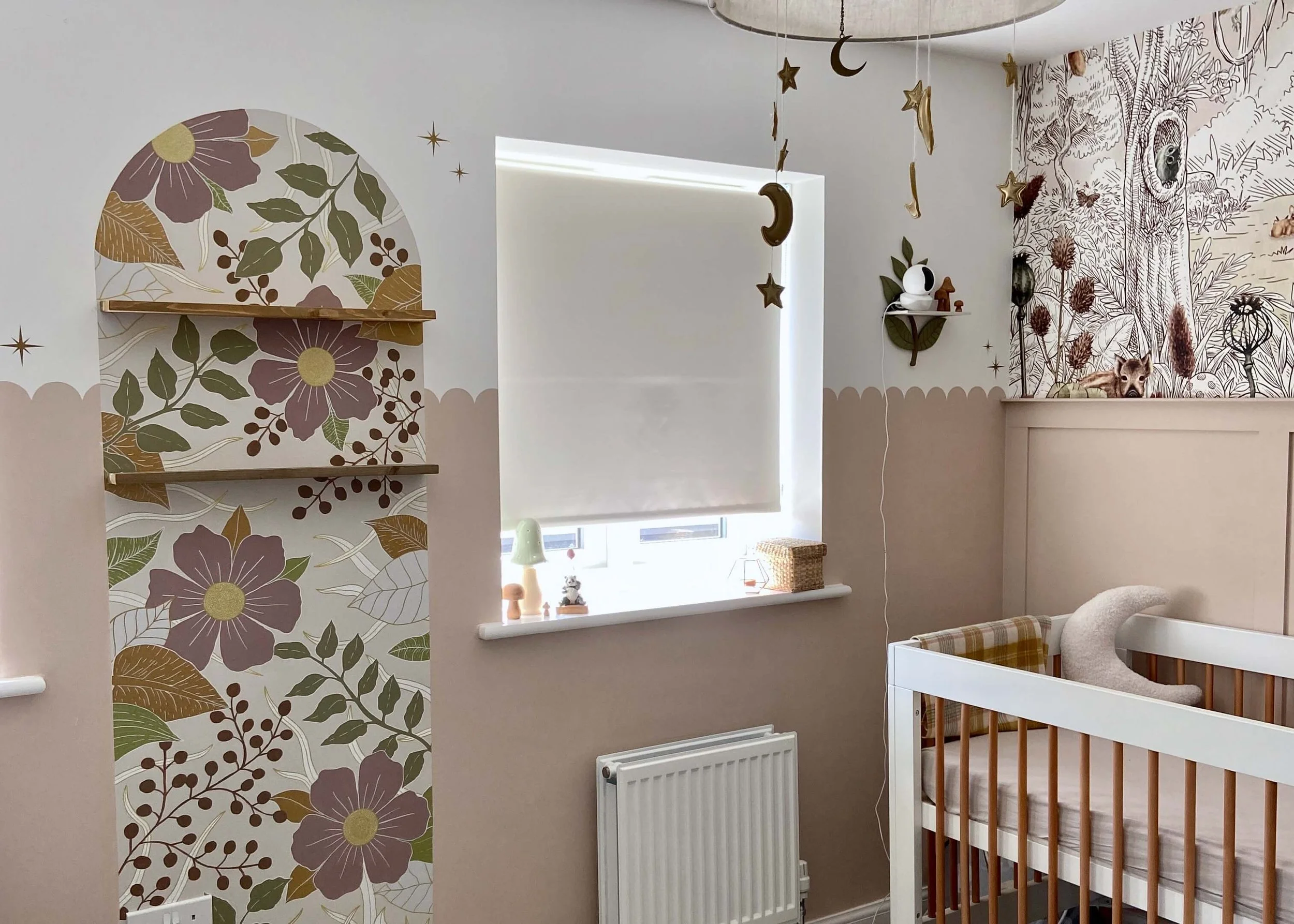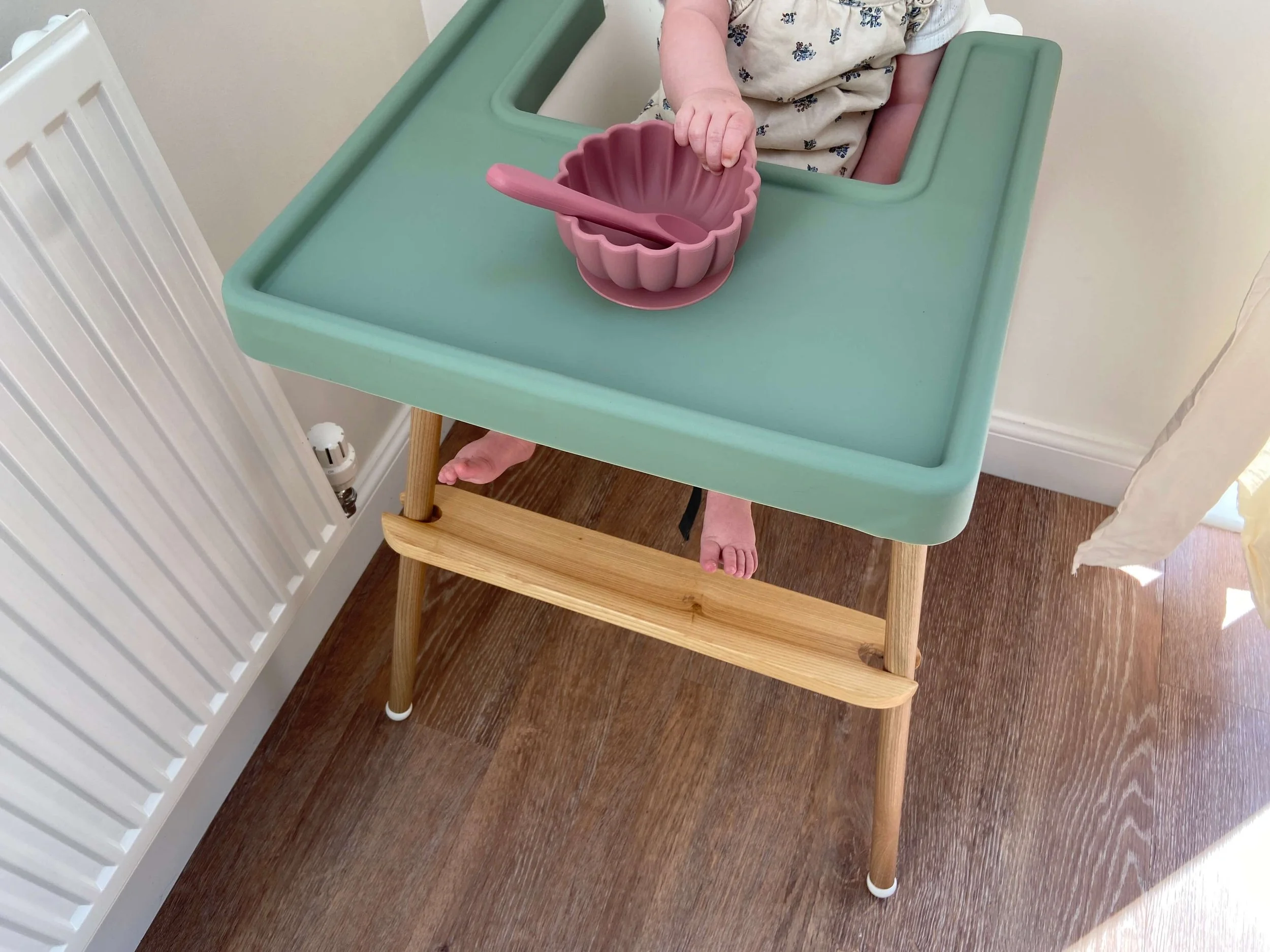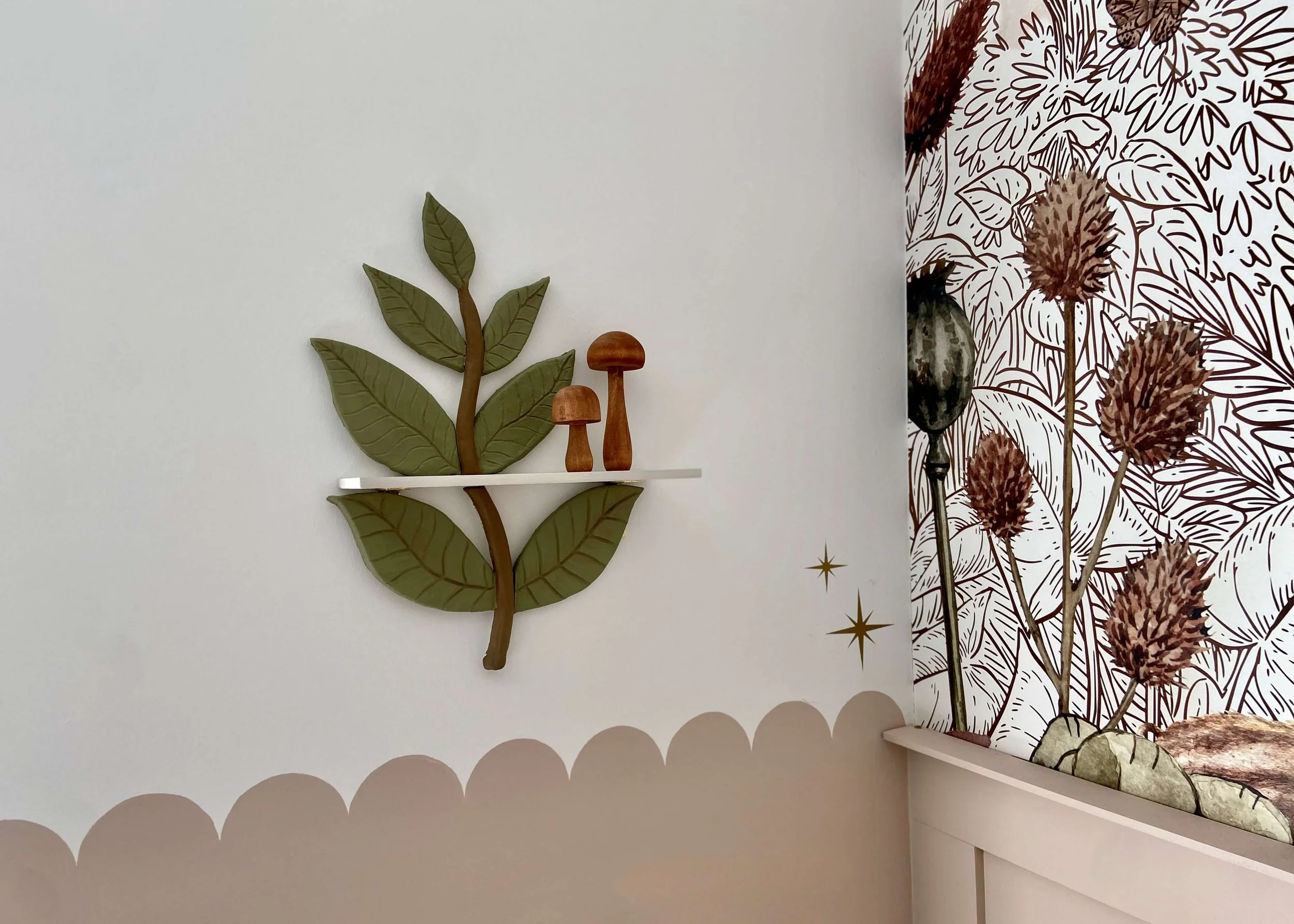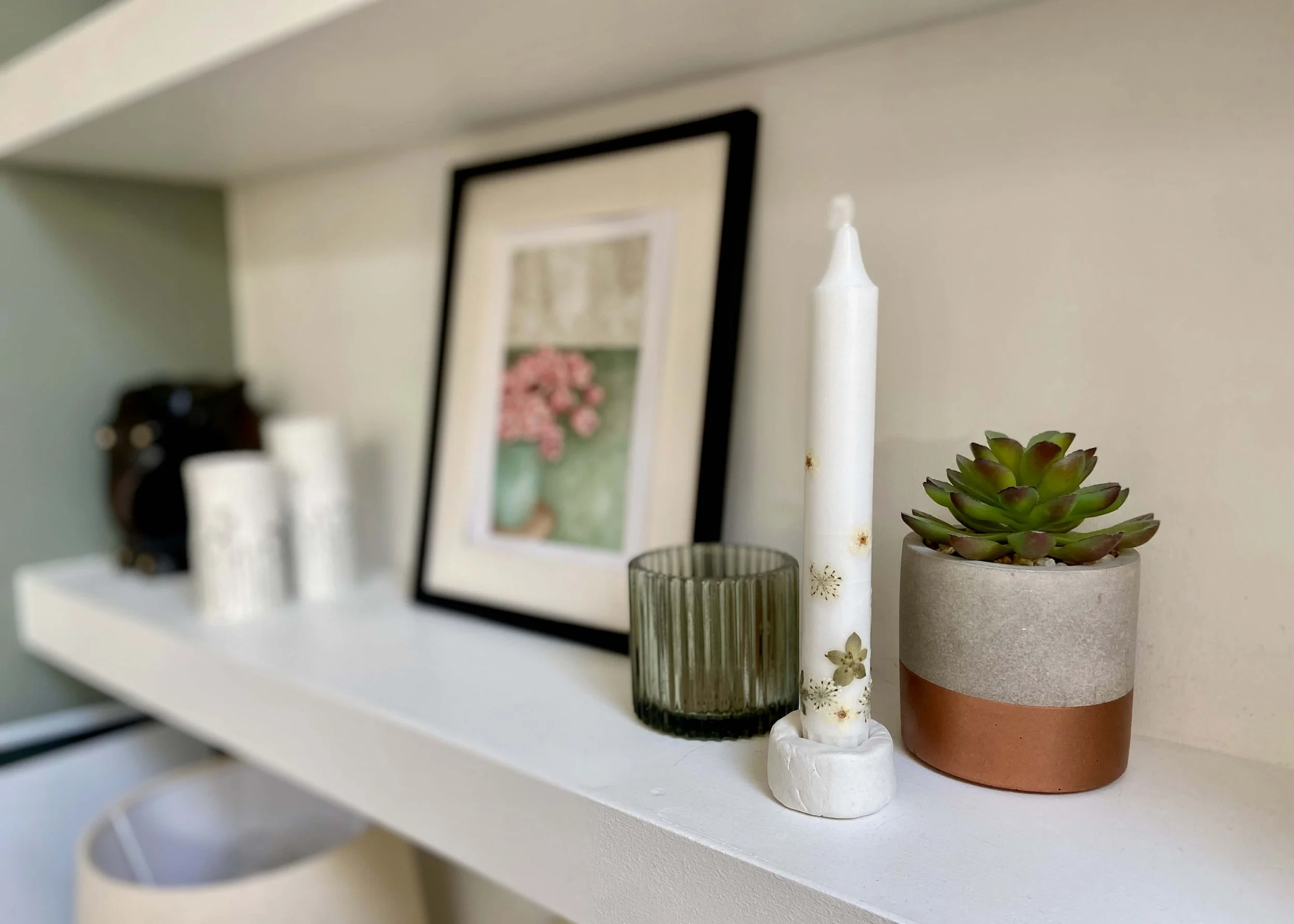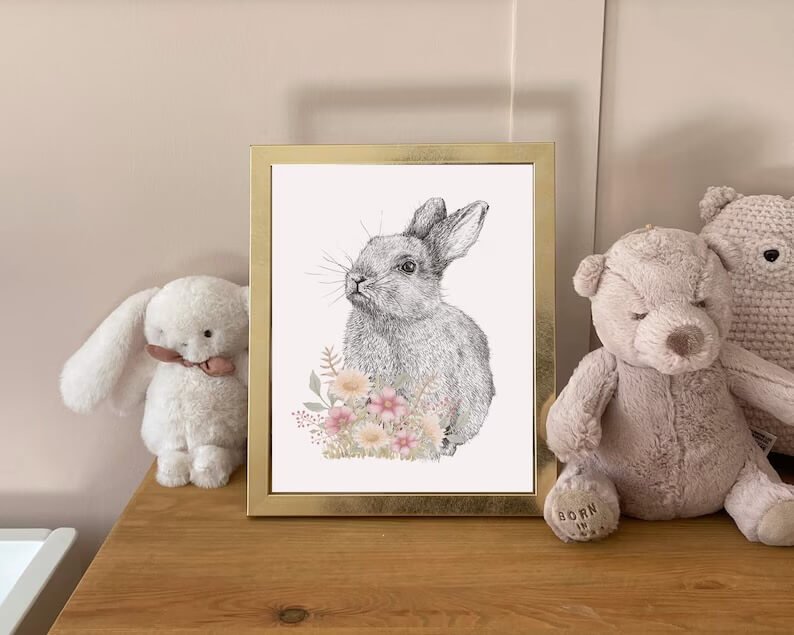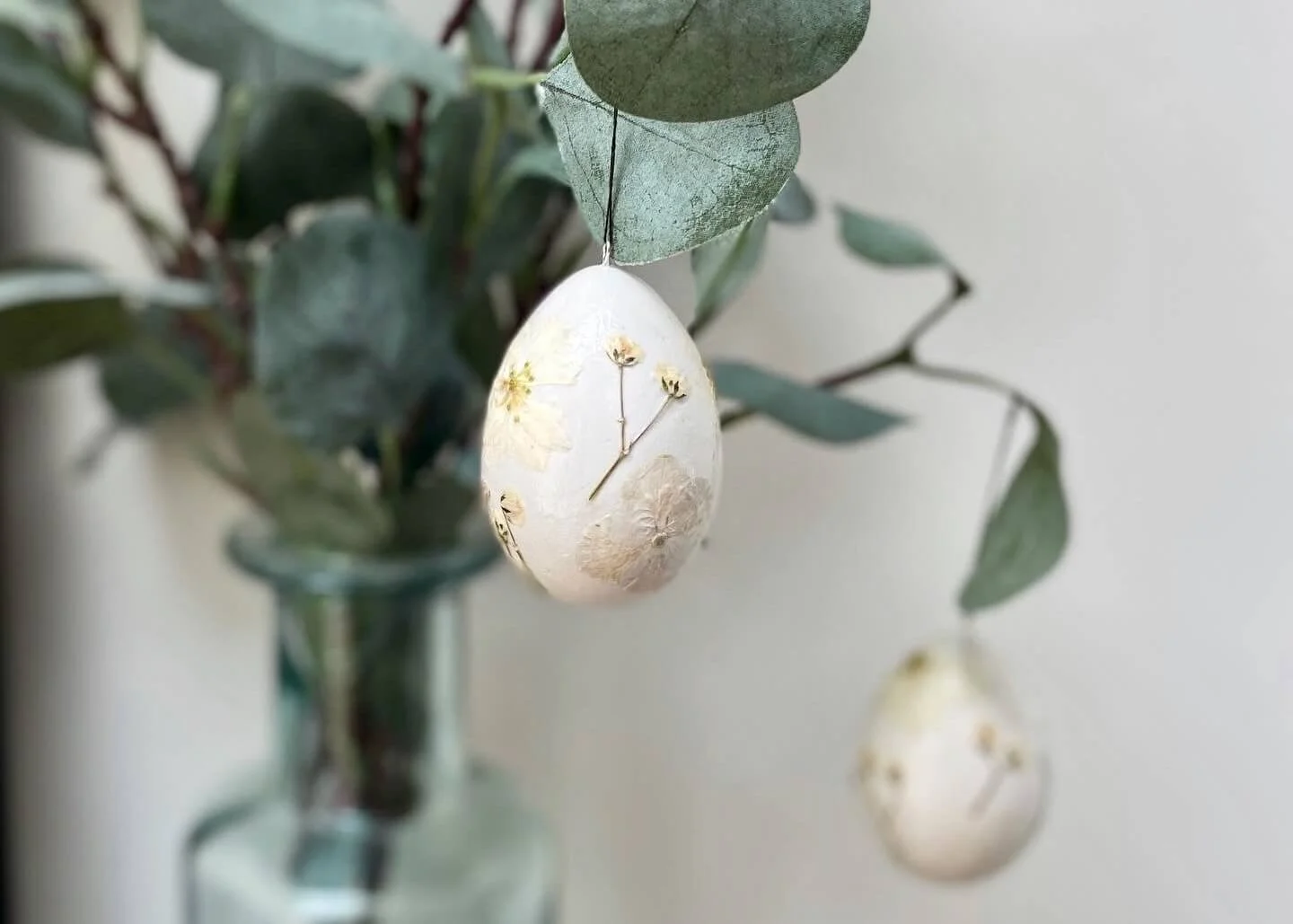Create your own DIY floating shelves with leftover wood and wooden dowels
I was expecting to post about our new wardrobe this weekend but after several delays with it being delivered and installed we’ll probably only be getting around to finishing as this post goes live! Still, this is a project that I’ve been slowly working on for a while, and the perfectionist in me has stopped me from saying it’s finished. I may well add another shelf underneath, but whilst this is a guest room it makes most sense to keep the shelves out of the way of people bumping into them. I love the look of floating shelves, and am so glad I had a go at making these myself.
If I had the right tools, like a table saw or circular saw, this would have taken no where near as long and would have been no where near as strenuous. I really do need to invest in some more tools, but the last time I bought a jigsaw I ended up taking it back as I could barely hold it whilst it cut let alone actually cut straight or accurate lines with it. Anyone else had that problem? Perhaps it was the make and model (it was cheap!) or maybe I’m just really physically weak… Let me know below if you have any tips or tool recommendations!
The shelves are FAR from perfect; the join between the front and back of the shelves would be much better had I had the correct tools, and for some unknown reason to me, the two shelves came out ever so slightly different shades using the exact same stain… BUT I’m no wood worker so I’m pretty proud of myself for this one! I hope you like this project as much as I do, who knew you could make floating shelves yourself from a length of pine and some dowels! Let me know what you think, don’t forget to share and subscribe, and keep reading for how I did it…
1.
First of all, cut your wood to length (I chose 50cm) and then cut it lengthwise. I did this approximately at 1/3 of the width of the wood.
2.
I then grabbed a length of dowel that was around 2/3 of the height of the wood planks in diameter. I then placed the dowel on top of the wood pieces together and marked on the dowel where to cut so that it was around 1.5cm shorter than the width of the wood togeher.
3.
I then cut the dowel at this mark using my wood saw and mitre box. I repeated this so that I had 4 dowels the same length.
4.
On the narrower piece of wood, I then turned it so that the inside of the piece was facing upwards and marked 4 places evenly along it.
5.
Using a small drill bit I created pilot holes on each of these marks and drilled all the way through the wood. I then gradually increased my drill bit size until I reached one the same diameter as my wooden dowel.
I also then added some pilot holes in between these holes to secure it to the wall.
6.
Next, I placed the narrower piece on top of the wider piece, and secured them together. On my drill bit, I placed a piece of tape around it to the depth of my dowel pieces, and then drilled through the holes on the narrower piece through to the wider piece,
7.
I then hammered in the dowels into the narrower piece of wood until the dowel was flush with the other side of the thinner wood (which will be the bracket for our shelf).
8.
Next, I took my DIY bracket and marked where I wanted it ensuring it was straight using a level. I then marked through the pilot holes onto the wall using a small drill bit.
9.
Using a drill bit the right size for my plasterboard wall plugs, I then drilled holes where I marked the wall. I then tapped in the wall plugs into these holes using a hammer, ensuring they were flush to the wall.
10.
I then placed the bracket with the pilot holes lined up with the wall plugs and using an appropriately size screw, fixed the bracket to the wall.
11.
Next, I lined up the wider piece of wood with the dowels on the bracket and hammered this into place. If you have any wiggle room with the dowels in the holes, add some wood glue before doing this. Mine were so snug I didn’t need to.
12.
Next, I filled in the gap between the bracket and wider piece of wood with wood filler. As I used pine wood, I used a pine coloured filler. Once dry, I sanded this down and the whole shelf to make sure it was smooth.
13.
After a good hoover, I then stained the whole shelf, and left it to dry thoroughly before styling. You may want to condition your wood first as I’ve heard this gives a more even finish.

